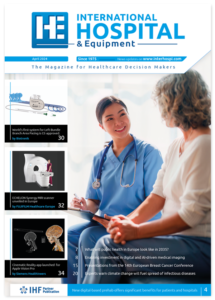Hospital teams reduce unnecessary preoperative testing by tailoring strategies to local workflows
A tailored, multi-faceted intervention has achieved substantial reductions in wasteful pre-surgery testing across Michigan hospitals, demonstrating that education, teamwork and site-specific adaptation can eliminate low-value care whilst preserving patient safety. The RITE-Size programme reduced unnecessary testing rates from 68% to 40% over six months across three hospital settings.
Every day, patients scheduled for routine operations undergo blood tests, electrocardiograms and imaging scans that frequently provide no clinical benefit. These unnecessary preoperative tests cost the US healthcare system an estimated $18 billion annually, including downstream care cascades triggered by incidental findings. Despite clinical guidelines advising against routine testing before low-risk surgery in healthy patients, the practice remains widespread, with hospital testing rates varying from under 20% to over 80% of cases.
Michigan programme targets systemic waste
The Right-Sizing Testing Before Elective Surgery (RITE-Size) programme, led by researchers at the University of Michigan, tested whether a comprehensive deimplementation strategy could reduce unnecessary testing across hospitals with different characteristics, sizes and patient populations. Published in JAMA Network Open on 6 October 2025, the quality improvement study involved 203 patients undergoing laparoscopic cholecystectomy, inguinal hernia repair or breast lumpectomy at three Michigan hospitals during a six-month period in 2024.
The intervention targeted 11 tests including electrocardiography, chest radiography, complete blood counts, metabolic panels and pulmonary function tests performed within 30 days of surgery in healthy patients classified as American Society of Anesthesiology class I or II. These patients had no major medical comorbidities that would increase surgical risk or justify routine testing.
“Our results show the importance of understanding what factors influence testing decisions at each hospital, and tailoring a multidimensional intervention to that environment,” says senior author Dr Lesly Dossett, a surgeon and healthcare researcher at U-M Health who co-directs the Michigan Programme on Value Enhancement.
Three-phase implementation achieves milestone completion
The RITE-Size team structured their intervention into three phases: baseline evaluation, preparation and active deimplementation. During baseline assessment, researchers conducted in-person site visits with key stakeholders including anaesthesiologists, surgeons, preoperative nurses and quality leads. These visits covered evidence supporting reduced testing, current guidelines and local testing culture.
The preparation phase involved coaching sessions reviewing baseline testing data and anticipating site-specific barriers and facilitators. Each hospital then developed a tailored protocol for testing reduction, supported by decision support tools, updated anaesthesia protocols and ongoing auditing and feedback systems.
Testing rates decreased significantly across all sites from 68% in months one to two, to 37.9% in months three to four, reaching 40.3% by months five to six (P = .001). One hospital achieved near-zero wasteful testing rates temporarily, whilst site-level variation reflected local facilitators and barriers identified through qualitative interviews.
Team cohesion and nurse involvement drive success
Semistructured interviews with nine stakeholders—including quality improvement leads, preoperative nurses, anaesthesiologists and surgeons—revealed critical implementation factors. Smaller hospitals adapted more rapidly due to cohesive, limited perioperative teams and streamlined administrative processes. Larger hospitals required longer timelines to coordinate numerous clinicians across various workflows.
“Too often implementation and quality improvement studies fail to recognise both the value and power held by nurses as part of the health system. This study is a great example of how understanding and including this factor led to success of their pilot intervention,” writes Dr Clifford Sheckter of Stanford University in an accompanying invited commentary.
The intervention achieved high acceptability and appropriateness scores amongst stakeholders, with median scores of 20 out of 20 for both measures. Key facilitators included strong leadership, incorporation into anesthesia policy and benchmarking against other hospitals through statewide surgical collaboratives. Barriers included ingrained testing behaviours requiring ongoing education and challenges coordinating across large healthcare systems.
Statewide expansion targets broader implementation
The authors note that “hospital systems can use this deimplementation strategy in the future to reduce unnecessary preoperative testing.” The success of this pilot work has prompted expansion of RITE-Size to 16 additional Michigan hospitals throughout 2025 and 2026, involving the Michigan Value Collaborative, Michigan Surgical Quality Collaborative and the Multicenter Perioperative Outcomes Group’s ASPIRE initiative.
Lead author Dr Nicole Mott, a National Clinician Scholar at U-M and general surgery resident at the University of Colorado, emphasises the intervention’s feasibility: “This quality improvement study of a multifaceted, multicomponent deimplementation strategy to reduce unnecessary preoperative testing at diverse hospital sites demonstrated feasibility of expanding this work in a stepped-wedge cluster randomised trial.”
The research team plans to enhance future implementation by having clinicians complete organisational readiness assessments before intervention, increasing engagement across all staff levels and providing implementation guides incorporating anticipated barriers from pilot work.
The study was funded by the Agency for Healthcare Research and Quality, with collaborative quality initiatives supported by Blue Cross Blue Shield of Michigan.
Reference
Mott, N. M., Greene, D., Jr., Kim, E., et. al. (2025). Right-sizing testing before elective surgery for patients with low risk. JAMA Network Open, 8(10), e2535750. https://doi.org/10.1001/jamanetworkopen.2025.35750


